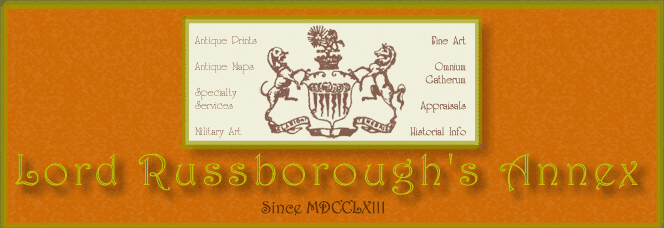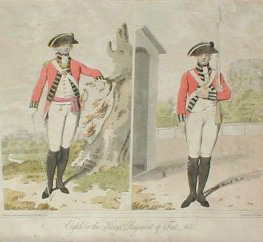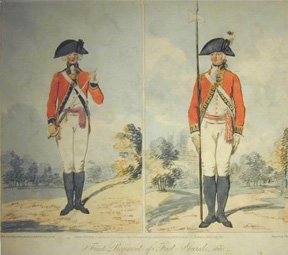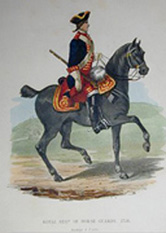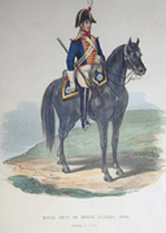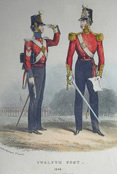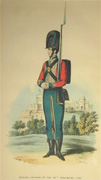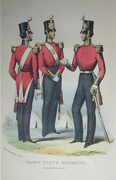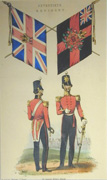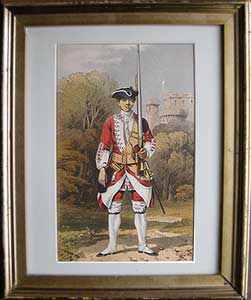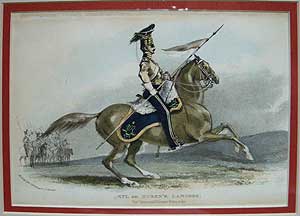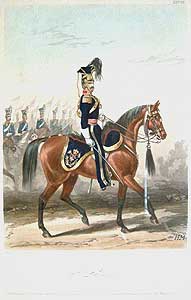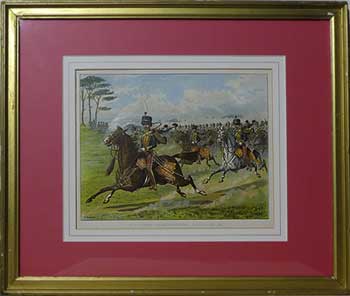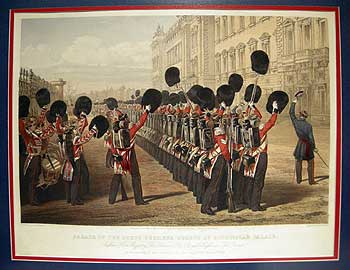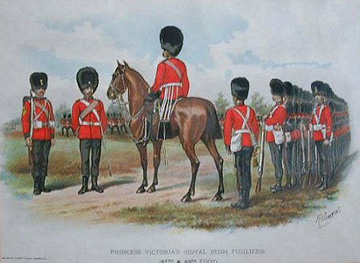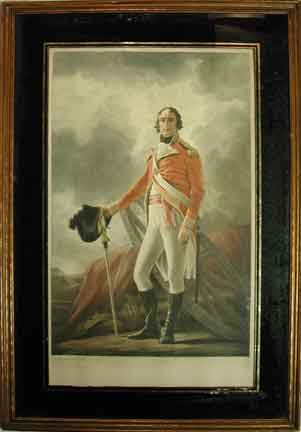
AN ENGLISH COLONEL
FULL LENGTH PORTRAIT OF AN OFFICER ON THE AMERICAN STATION
Henry Macbeth Raeburn. Published H. Graves & Co., London 1928
Progress proof before title Signed (bottom Left) below image. Colour mezzotint Original reverse painted lacquer and gilt glazing giltwood frame. Bears blind stamp of the Printsellers Association.
A progress proof before title. Signed in pencil on bottom margin and printed on thick wove paper. Depicts a full length standing portrait of a field officer in the British army - a colonel, whilst on the North American station, during the British Hanovarian colonial era, ca. 1788 - 1790. He wears his naturally dark hair unpowdered.His full tailed scarlet jacket has yellow facings and cuffs is doubled breasted, with gold buttons un-looped, with no lace, and worn closed as was then the fashion. Gold epaulets are worn on both shoulders. The jacket is white linen lined and worn over a white waist coat and white pantaloons, offset by a black stock and black Hessian boots, around his waist he wares a burgundy sash. The waist belt is worn over his right shoulder following the military dress order of 1788. He stands with his right hand resting on his ornate silver sword hilt , his hand also clasps his black hat, which has a black cockade. Behind him is a flag draped disassembled heavy field canon suggesting that the sitter may have been an ordnance officer. Alas no regimental numbers or badges are distinguishable, but in all this is a handsome military portrait by an artist who reveled in depicting the glory of the colonial era. This would be a handsome addition to grace the walls of any C/O. or military enthusiast.
Henry Macbeth Raeburn RA. RE. 1860 -1947
A noted Scottish painter and mezzotint engraver of portraits after the late 18th. and early 19th. century British painters, which reproduced with accuracy and finesse the glory of these earlier masters. etcher of sentimental subjects, landscapes and architectural views after his contemporaries, notably Gainsborough, Reynolds and Sargent, and his own designs. He was a member of the Royal Academy and the Royal Society of Painters, Etchers, and Engravers. He was the brother of R.W.Macbeth and took the name Raeburn to,distinguish himself. He studied at the RSA. schools and in Paris. Lived in Edinburgh and London.
Reference: Benezit, Dictionnaire de Peintres, Sculpteurs, Dessinateurs et Graveurs, vol. 8, p. 905; Thieme/Becker, Allgemeines Lexicon der bilden Künstler, Vol. 23/24, p. 505; Dictionary of National Biography; O'Donoghue, Catalogue of Engraved British Portraits... in the British Museum.
Plate size 26 1/4 x 16 1/8 (66.7 x 41 cm) Frame 35 3/4 x 24 1/4”
Ref. RI 450/RVL> d.ns> VOL SOLD PRICE CODE D

